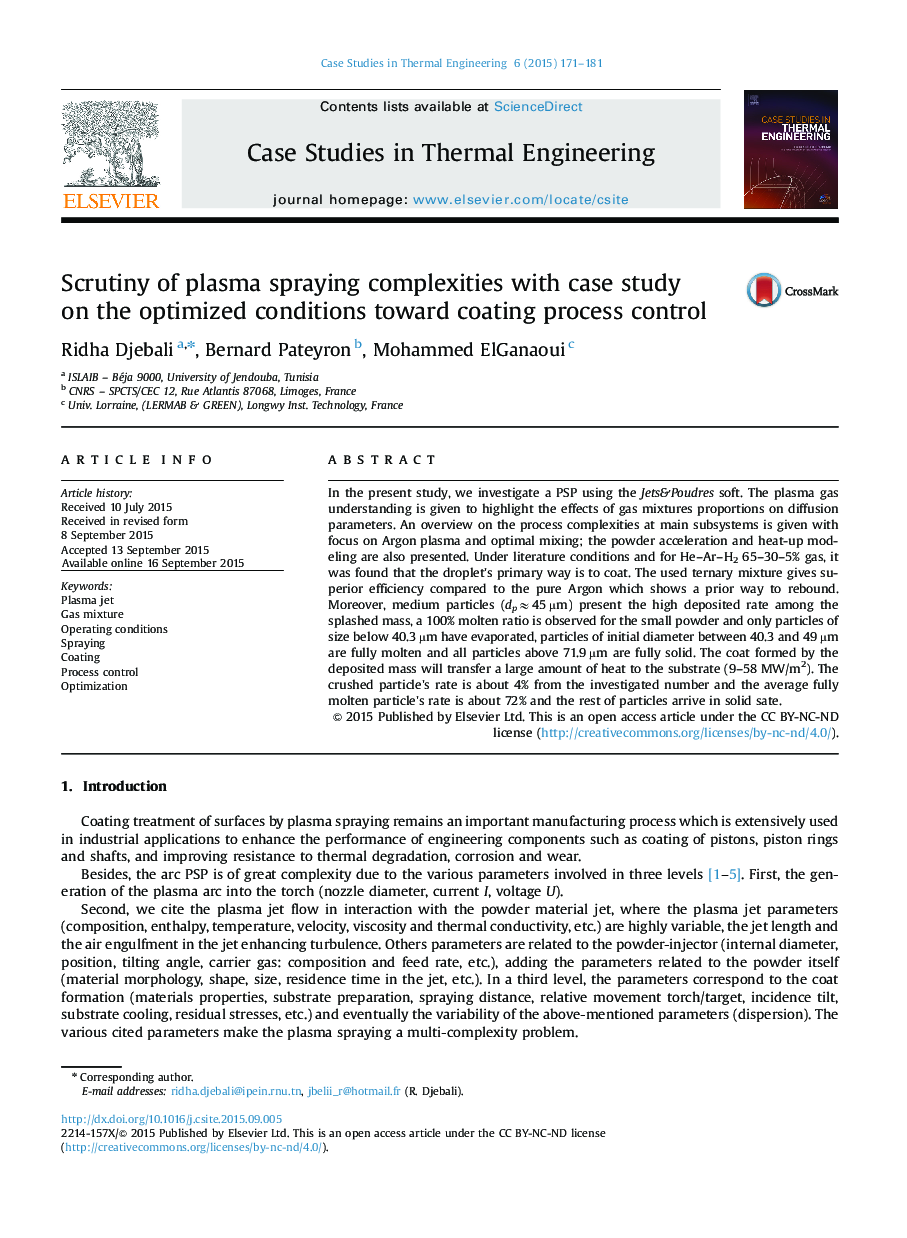| Article ID | Journal | Published Year | Pages | File Type |
|---|---|---|---|---|
| 757506 | Case Studies in Thermal Engineering | 2015 | 11 Pages |
In the present study, we investigate a PSP using the Jets&Poudres soft. The plasma gas understanding is given to highlight the effects of gas mixtures proportions on diffusion parameters. An overview on the process complexities at main subsystems is given with focus on Argon plasma and optimal mixing; the powder acceleration and heat-up modeling are also presented. Under literature conditions and for He–Ar–H2 65–30–5% gas, it was found that the droplet's primary way is to coat. The used ternary mixture gives superior efficiency compared to the pure Argon which shows a prior way to rebound. Moreover, medium particles (dp≈45 µm) present the high deposited rate among the splashed mass, a 100% molten ratio is observed for the small powder and only particles of size below 40.3 µm have evaporated, particles of initial diameter between 40.3 and 49 µm are fully molten and all particles above 71.9 µm are fully solid. The coat formed by the deposited mass will transfer a large amount of heat to the substrate (9–58 MW/m2). The crushed particle's rate is about 4% from the investigated number and the average fully molten particle's rate is about 72% and the rest of particles arrive in solid sate.
